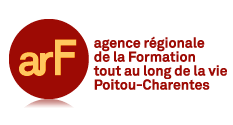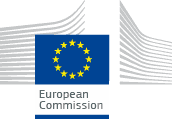 By Jean-Marie Boisson. In a book published in 1968, two Belgian academics identified five different types of university models: Anglo-Saxon, German, American, French and Soviet.
By Jean-Marie Boisson. In a book published in 1968, two Belgian academics identified five different types of university models: Anglo-Saxon, German, American, French and Soviet. Their ideas can be reduced to the following extremely short synthesis: the Anglo-Saxon model provides the individual with a way to realise him- or herself through learning; in the German model learning serves the truth; the American model sees learning as being about human progress. In the two remaining models, the French and the Soviet, learning serves the needs of existing power structures.
As a French academic, my first reaction could have been taken straight out of an Asterix cartoon: “They are crazy, the Belgians”. But I do realise that our Belgian colleagues are so much better placed than we are to form a synthetic and comparative view of university systems. So after some thought and with my point of comparison defined as 1968, it became clear that this analysis is quite precise in historical terms.
There are actually not very many people, not even among academics, who know that the French Revolution suppressed traditional universities in 1793, and that Napoleon confirmed the new university system and placed it at the service of
la nation with its essential mission being to provide professional training.
Universities were replaced by
grandes écoles – including schools of engineering, military training, medicine, chemistry and law – all in the service of the state. Only two traditional faculties remained: faculties of letters and faculties of science. Their essential mission was to train teachers who, in turn, would train little French boys in the
lycées (upper secondary) – girls were only admitted to the
grandes écoles at a very late stage – and prepare them for Napoleonic schools. So the system was perfectly coherent and self-contained.
Napoleon’s
université impériale took the place of a national ministry of education until it was replaced by the ministry of public instruction during the republic. In this way 'university' came to stand for the higher education sector of the regional administrative units known as 'academies' (as they are still known), at the head of which the government appoints a high-level administrator with the title of
recteur. The French
recteur is in charge of all types of education: primary schools, secondary schools and tertiary-level education. The
académie awards the title of ‘university', but this does not relate to any unified structure. So, on the one hand, rectors manage the finances and personnel issues at universities while, on the other, faculties and their deans manage pedagogical issues and now also research.
Meanwhile, the schools of medicine, law and, later, pharmacy preferred to be known as faculties, as this sounded more prestigious in international terms and corresponded better to the development of research at these institutions. But the presence of several such faculties in any given city does not necessarily lead to the creation of a university. The rector remains the administrator appointed by Paris who has an overview of all areas of education, and the deans, elected by their peers, enjoy a wide measure of autonomy, although within the financial limits set by the ministry. The large majority of university personnel are civil servants.
The traditional
grandes écoles, structured to meet the needs of the large
corps de l’état, are essentially professional education institutions that enjoy wide autonomy and are usually linked to ministries other than the national Ministry of Education. They have increasingly included the large (and subsequently the less large) schools of commerce that are structured in much the same way, but are almost all under the auspices of chambers of commerce and not the national Ministry of Education.
French system is very different From this it becomes clear that the French system of higher education differs in every way from the systems found in all the other countries surrounding France. Even countries that have been under strong Napoleonic influence, such as Spain or Italy, have maintained traditional universities with an elected rector, while polytechnic universities contain the equivalent of the
grandes écoles for engineers or administrators.
In this historical perspective it is easier to understand the shock that occurred in France at the end of the 1960s: it was the result, on the one hand, of the demographic explosion in the number of young people who demanded enrolment in higher education and, on the other, of the implementation of a new law, which introduced new structures according to which universities could elect their own presidents. The first shock, that of student demographics, resulted in immense efforts being made by faculties of science and letters and, to a lesser extent, of law and economics, to overhaul their curricula completely in order to cope with the influx of students.
It was no longer a question of concentrating on the training of future teachers, as it had been earlier, but of diversifying courses to make them more professional and to respond to the need to prepare students for different jobs. All of this was done on a limited budget. In the light of limited funding, the constraints imposed (no changes were made around student selection and student rights) and criticism of institutions' lack of contact with civil and economic society – contact that was normally reserved for the
grandes écoles) – this proved a success.
The second shock, however, came as a result of the 'Edgar Faure' law, which introduced genuine universities. It had disastrous consequences: the faculties embraced the new structures and under the fallacious but then famous pretext of ‘small is beautiful’, they set themselves up as universities by instituting haphazard alliances; law and medicine here, letters and law there.
In many cases they simply set up on their own. In this way, in the majority of our cities in the provinces (not to mention Paris) the faculties split into two, three, even four separate universities. It is not worth elaborating on the consequences of this state of affairs: a lack of visibility and confusion on the national as well as international level, not to mention sterile rivalries among universities in the same location and the multiplication of identical job functions, leading to a lack of efficiency and to funding problems. Unfortunately, this state of affairs is impossible to change easily.
Even with the best of wills and when people are persuaded of the argument about how inefficient these divisions are, a university president cannot lightly take the risk of attempting to merge with one or two other universities since a merger will always be seen internally as being advantageous only to the other institutions involved and will mean the president's power is diminished. Few mergers have so far been completed; the present powers of the presidents are far too strong and strategic. Now and again, a merger project is advertised. There are the ‘PRES’ structures, which bring universities and research institutions together in clusters, but they risk cementing divisions instead of minimising them.
University reforms And yet this question is scarcely addressed in the swelling debate on current university reforms in France, regardless of the fact that it is one of the fundamental issues if one wants to reinstate some sort of order in the French higher education system, and to align French institutions with the great universities throughout the world.
The main objection to regrouping France's many institutions is that it would result in huge universities. This is true, but one can imagine several solutions along the lines of those practised elsewhere and there are multiple examples: the University of London, the Complutense University of Madrid and the University of California are all enormous institutions in terms of sheer numbers. But they have managed to adapt their forms of governance. In essence, these forms of governance are based on a definition of the respective strengths of their various components and a decentralisation of central power (whether rector or president) to faculties or their equivalents, which are situated on different campuses.
A rector or president should in essence be responsible for general policy, institutional planning, global inter-university relations – with the professional world and with international partners – and long-term decision-making. They should not get involved in things, such as evaluating academic competence, that are outside their remit (except within their own academic field, of course) or research issues. That should be what the deans or heads of departments do since they are responsible for the functioning of faculties or departments.
It is vital that France find the regulatory and financial means to encourage or oblige universities at major locations to merge into large, universal and decentralised institutions. The law should reserve the title of ‘university’ (or ‘research university’ as some countries abroad term it) for institutions that bring together all the major basic disciplines in education and research in large faculties or schools. This reunification may be difficult, but it is inevitable. It could also involve the
grandes écoles which call themselves ‘graduate schools’, as they benefit from what universities do. Unfortunately, the new law has completely missed this point.
Furthermore, the new law has given greater powers to presidents in areas that should not be theirs, such as the selection of teaching staff. All this law does is to replace the present system of national centralisation, with all its flaws as well as its strengths, with an internal centralisation. This risks creating a more inefficient system, which will merely lead to a reinforcement of local competition.
*
Jean-Marie Boisson is professor emeritus in the economics faculty of the University of Montpellier. A longer version of this article has been published in the Journal of European Higher Education Area
, March 2012, under the title “Why Do So Many French Universities Wear a Number? Some reflections on the recent (hi)story of French universities system".
 L'ARFTLV vient de mettre en ligne le tableau de l'état des lieux national de la labellisation du Service Public de l'Orientation (SPO). Ce bilan, réalisé par le CCREFP Poitou-Charentes, est régulièrement mis à jour en fonction des nouvelles labellisations.
L'ARFTLV vient de mettre en ligne le tableau de l'état des lieux national de la labellisation du Service Public de l'Orientation (SPO). Ce bilan, réalisé par le CCREFP Poitou-Charentes, est régulièrement mis à jour en fonction des nouvelles labellisations. ARFTLV stačí nahrať obraz národného línie označovanie verejné služby Orientácia (SPÖ). Preskúmanie, vykonaný CCREFP Poitou-Charentes, je pravidelne aktualizovaný na základe nových značiek.
ARFTLV stačí nahrať obraz národného línie označovanie verejné služby Orientácia (SPÖ). Preskúmanie, vykonaný CCREFP Poitou-Charentes, je pravidelne aktualizovaný na základe nových značiek. 






/https%3A%2F%2Fprofilepics.canalblog.com%2Fprofilepics%2F1%2F0%2F1076071.jpg)